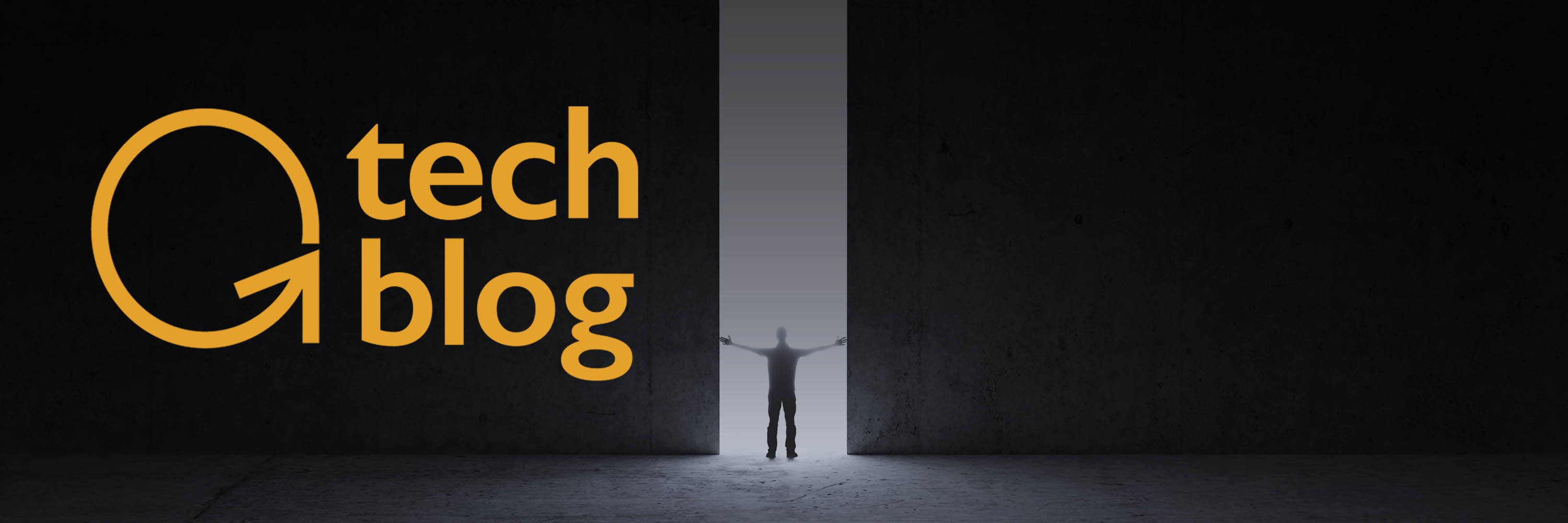
In this week's Abundance Insider: Pizza delivery robots, transparent wood and energy enabled fungi.
Cheers,
Peter, Marissa, Cody, Maxx, Kelley and Greg
P.S. Send any tips to: data@diamandis.com, and send your friends and family to this link to subscribe to Abundance Insider.
Domino's is Trialling an Autonomous Delivery Robot
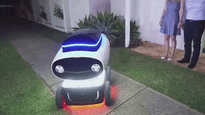
What it is: Domino's recently announced a new autonomous robot called the Domino's Robotic Unit, or DRU, that can deliver pizzas within a 12-mile range. DRU is a little over three feet tall and can carry up to 10 pizza boxes (and many cold beverages) in its dual insulated compartments. Its onboard sensors help it avoid obstacles, and it's built to navigate roads and sidewalks with ease.
Why it's important: This Domino's development is effectively the digitization of delivery drivers. Soon, delivery bots will be as commonplace as the car-top pizza delivery signs we see on the road today.
Spotted by Cody Rapp
Scientists Develop 'Transparent Wood'
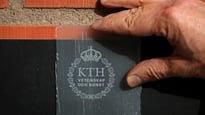
What it is: Researchers at the KTH Royal Institute of Technology in Sweden have developed a transparent material based on wood that could revolutionize how we create solar cells and windows. The researchers first removed lignin from wood fibers, leaving the wood pure white, and then mixed it with prepolymerized methyl methacrylate (PMMA), transforming it into its transparent state.
Why it's important: This material has a number of properties that make it ideal for construction purposes: toughness, low thermal conductivity, strength and low density. Eventually, it could replace silica-based glass in windows and solar cells.
Spotted by Aryadeep S. Acharya
Tokyo 2020: The Olympics of the Future

What it is: We still have four years to go until the Tokyo Olympics, but local organizers have already teased some of the innovations they plan to bring to the global stage. Among them are a robot village filled with cutting-edge automatons that can help people with transportation, directions and translations; instant language translation; autonomous taxis; 8K TV broadcasts; and artificial meteor showers for the opening festivities.
Why it's important: Historically, the Olympics is when cities show off their innovation, and Tokyo 2020 is no exception. (Remember in 2002, when the Salt Lake City Winter Games debuted instant video replays?) It'll be interesting to see which of these "leaked experiences" are commonplace by 2020, thanks to exponential growth.
Spotted by Cody Rapp
First-Ever 3D Printed Robots Made of Both Solids and Liquids

What it is: Researchers at MIT CSAIL have created a new technique that paves the way for 3D printed dynamic robots that are ready for use immediately after printing -- no assembly or cleaning required. The inkjet printing technique enables simultaneous printing of solid and liquid materials, or "printable hydraulics."
Why it's important: "It's an important step towards the next big phase of 3D printing -- moving from printing passive parts to printing active integrated systems," explains Hod Lipson, a professor of engineering at Columbia University. This capability has massive implications for disaster relief: imagine being able to print a complex, hydraulically powered robot that's ready to go to work immediately.
Spotted by Sarah Black
A Fleet of Trucks Just Drove Themselves Across Europe

What it is: A tiny fleet (about a dozen) of commercial trucks has just crossed Europe using primarily autonomous driving modes -- the first feat of its kind on the continent. It's all part of the European Truck Platooning Challenge, an elaborate event organized by the Dutch government that hopes to unify the automotive industry and accelerate autonomous commercial trucks.
Why it's important: "Platooning," or the act of autonomous vehicles following each other, has tremendous effects on efficiency: it's cheaper than driving on cruise control, and according to Quartz's reporting of a TNO study, it can also "reduce fuel use by up to 15%, prevent human error from causing accidents, and reduce congestion."
Spotted by Dan Swift
NVIDIA Launches World's First Deep Learning Supercomputer
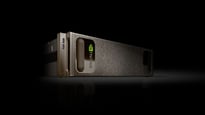
What it is: The NVIDIA DGX-1 is a supercomputer that's designed especially for deep learning. The "turnkey system" has GPU accelerators that can deliver the equivalent throughput of 250 x86 servers, plus an array of deep learning software, development tools and hardware. All together, the system can deliver "12X faster training than four-way NVIDIA Maxwell architecture-based solutions from just one year ago," according to a NVIDIA press release.
Why it's important: "Artificial intelligence is the most far-reaching technological advancement in our lifetime," said Jen-Hsun Huang, CEO and co-founder of NVIDIA. "It changes every industry, every company, everything. It will open up markets to benefit everyone. Data scientists and AI researchers today spend far too much time on home-brewed high performance computing solutions. The DGX-1 is easy to deploy and was created for one purpose: to unlock the powers of superhuman capabilities and apply them to problems that were once unsolvable."
Spotted by Tyler Achtem
Breakthrough Starshot: Yuri Milner & Stephen Hawking's Next Moonshot

What it is: Last year, we covered Yuri Milner's $100 million Breakthrough Listen initiative to search for extraterrestrial life, but the Russian billionaire isn't done. He, along with Stephen Hawking, announced a new project called Breakthrough Starshot, which will "explore the technologies needed to create small, light-powered spacecraft capable of reaching Alpha Centauri in just 20 years," as The Verge reports. Mark Zuckerberg is on Starshot's board of directors, and former NASA AMES director Pete Worden will lead the project.
Why it's important: Besides the prospect of space exploration, this project has a tremendous development potential for business. Chip-sized spacecrafts, like the ones Breakthrough Starshot plans to develop to get to Alpha Centauri, could also be used to deliver free global wifi or gather extensive data on the Earth's surface (crops, water, and more).
Spotted by Arun Gupta
Facebook Unveils 'Surround 360' Open Source Camera
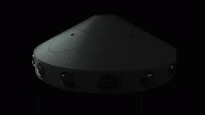
What it is: At F8, Facebook revealed a durable, super-portable, 17-lens 3D VR camera called the Surround 360 that's specifically designed to capture high-resolution footage (up to 8K) while dramatically simplifying and optimizing post-production work. What's more, according to TechCrunch, Facebook will open source the hardware designs and video stitching algorithm on GitHub.
Why it's important: By building a world-class camera and then open-sourcing every bit of its design, Facebook is positioned to dramatically accelerate the pace of Virtual Reality and 360 adoption and content creation.
Spotted by Cody Rapp
Reverse Photosynthesis: Energy Source of the Future?
What it is: University of Copenhagen researchers have recently announced a breakthrough discovery: reverse photosynthesis. In contrast to photosynthesis (solar rays building plant material), reverse photosynthesis means the energy in solar rays breaks down -- and when combined with natural enzymes called monooxygenases, solar rays can be used to produce biofuels and chemicals for plastics in an incredibly resource-efficient manner.
Why it's important: In nature, reverse photosynthesis enables fungi and bacteria to access the nutrients and sugars found in plants. Researcher David Cannella explains the implications for industry: "...by using the Sun, we can produce biofuels and biochemicals for things like plastics -- faster, at lower temperatures and with enhanced energy-efficiency. Some of the reactions, which currently take 24 hours, can be achieved in just 10 minutes by using the Sun."
Spotted by Jens Krabbe
What is Abundance Insider?
This email is a briefing of the week's most compelling, abundance-enabling tech developments, curated by Marissa Brassfield in preparation for Abundance 360. Read more about A360 below.
Want more conversations like this?
At Abundance 360, Peter's 250-person executive mastermind, we teach the metatrends, implications and unfair advantages for entrepreneurs enabled by breakthroughs like those featured above. The program is highly selective and we're almost full, but we're still looking for a few final CEOs and entrepreneurs who want to change the world. Apply now for Abundance360 Summit if you'd like to develop an Abundance Mindset.
Know someone who would benefit from getting Abundance Insider? Send them to this link to sign up.
Topics: Abundance Insider







